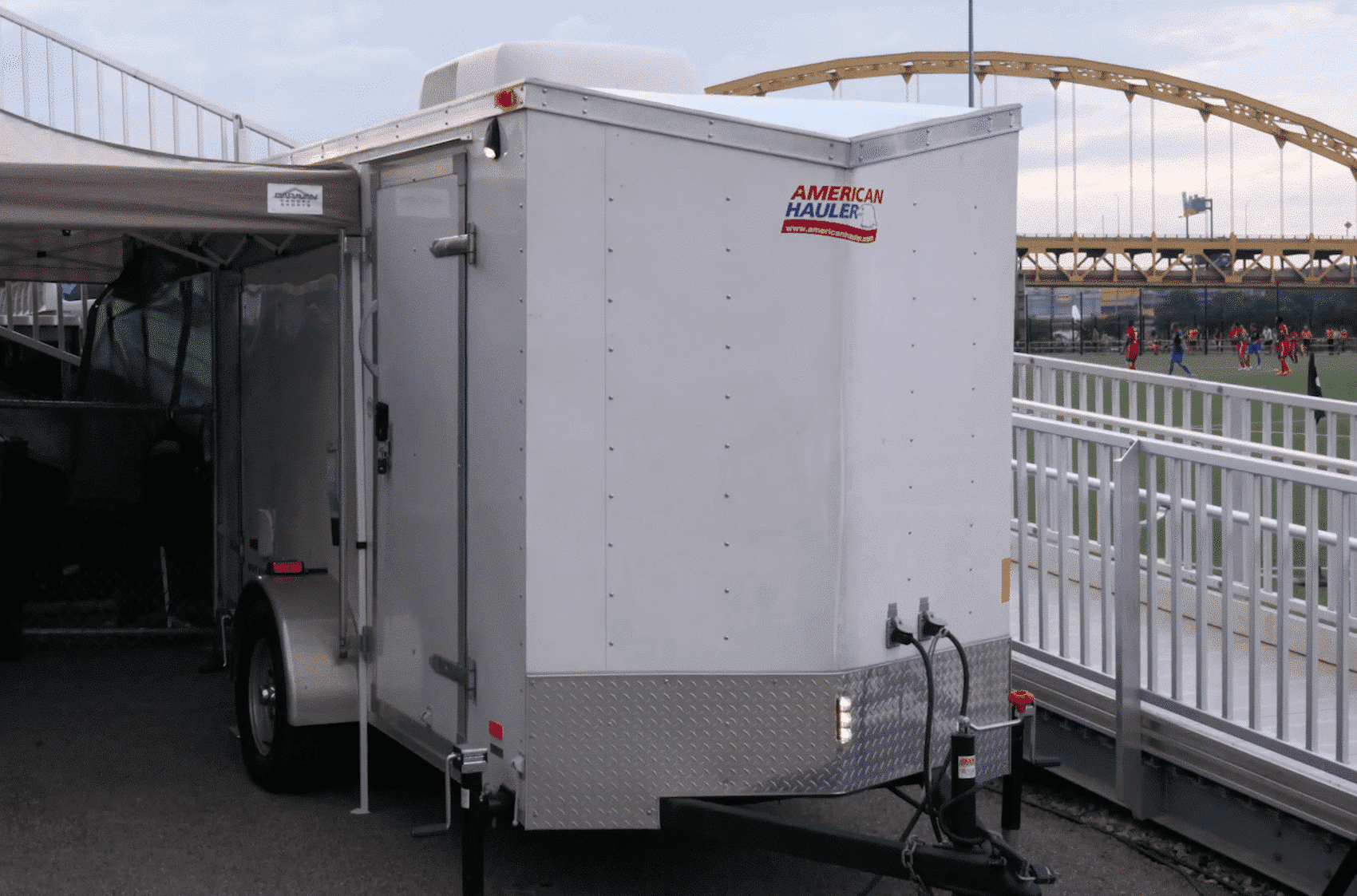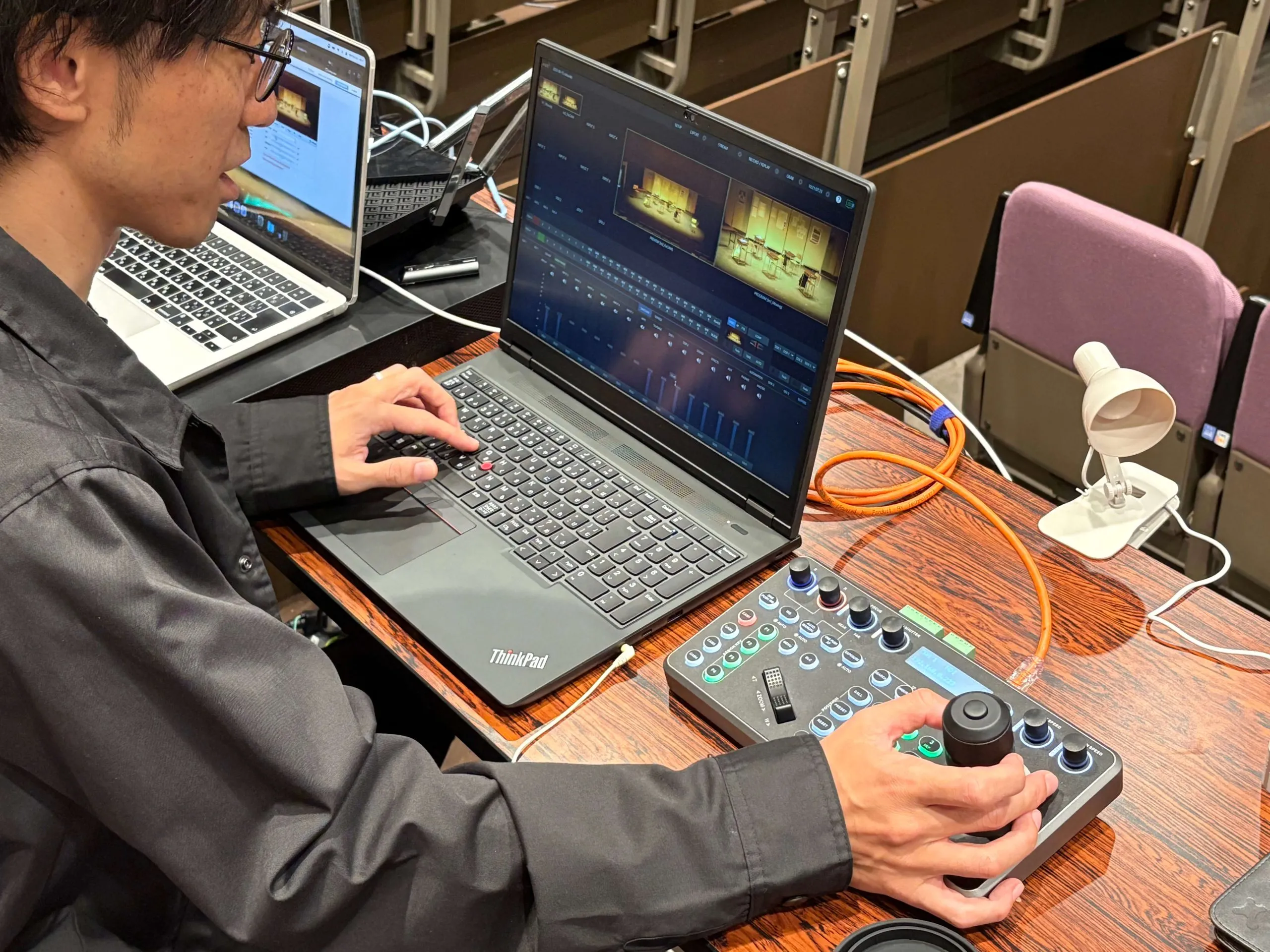Once upon a time, television production trucks were like cruise ships on wheels. They pulled into a sporting event, swaggering with self-importance; fifty feet of gleaming metal pulled behind a pavement-buckling Peterbilt that belched diesel smoke and deafened every innocent bystander within a mile’s radius. Once parked, these production trailers began unloading thousands of pounds of equipment and unspooled miles of cable. Inside one these lustrous fifty-foot beasts, you might find a dozen or more crew members, all working away happily, while the truck sucked down power like a thirsty brontosaurus.
While there still are plenty of those fifty-foot behemoths out on the roads, I’d like to encourage you to contemplate a different sort of picture. Imagine, if you would, a Ford Focus pulling up in front of that same venue with what looks like a horse trailer trailing behind, a five-by-ten-foot box, smaller than your average bathroom. Imagine the crew, running extension cords from their tiny truck to a pair of household outlets. Ask yourself what kind of show a production truck that size could put on.
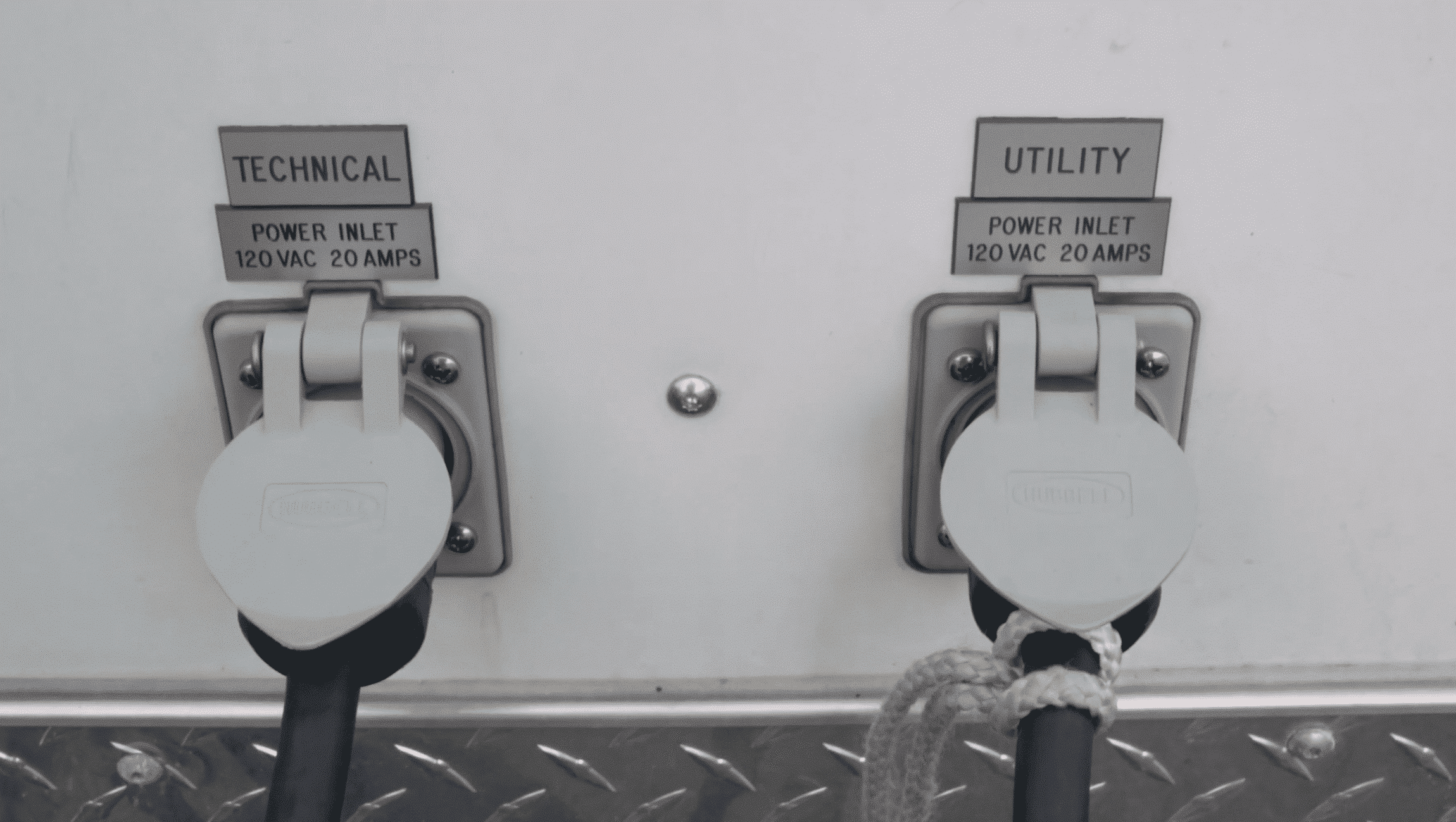
A pretty impressive one it turns out. How about a six-camera production with three announcers in the booth and one on the field, an eight channel instant replay position, four channels of intercom, and full IFB capabilities, as well as talkback? Once or twice a week throughout the spring, summer, and fall of 2016, Production Consulting Group has been producing top-quality soccer broadcasts for the Pittsburgh Riverhounds, a member of the United Soccer League, from just such a truck. John Powell, Director of Technical Operations for PCG, a company with offices in both Pittsburgh and Cleveland, helped build this tiny production dynamo three years ago, and he’s understandably proud of what his baby can do.
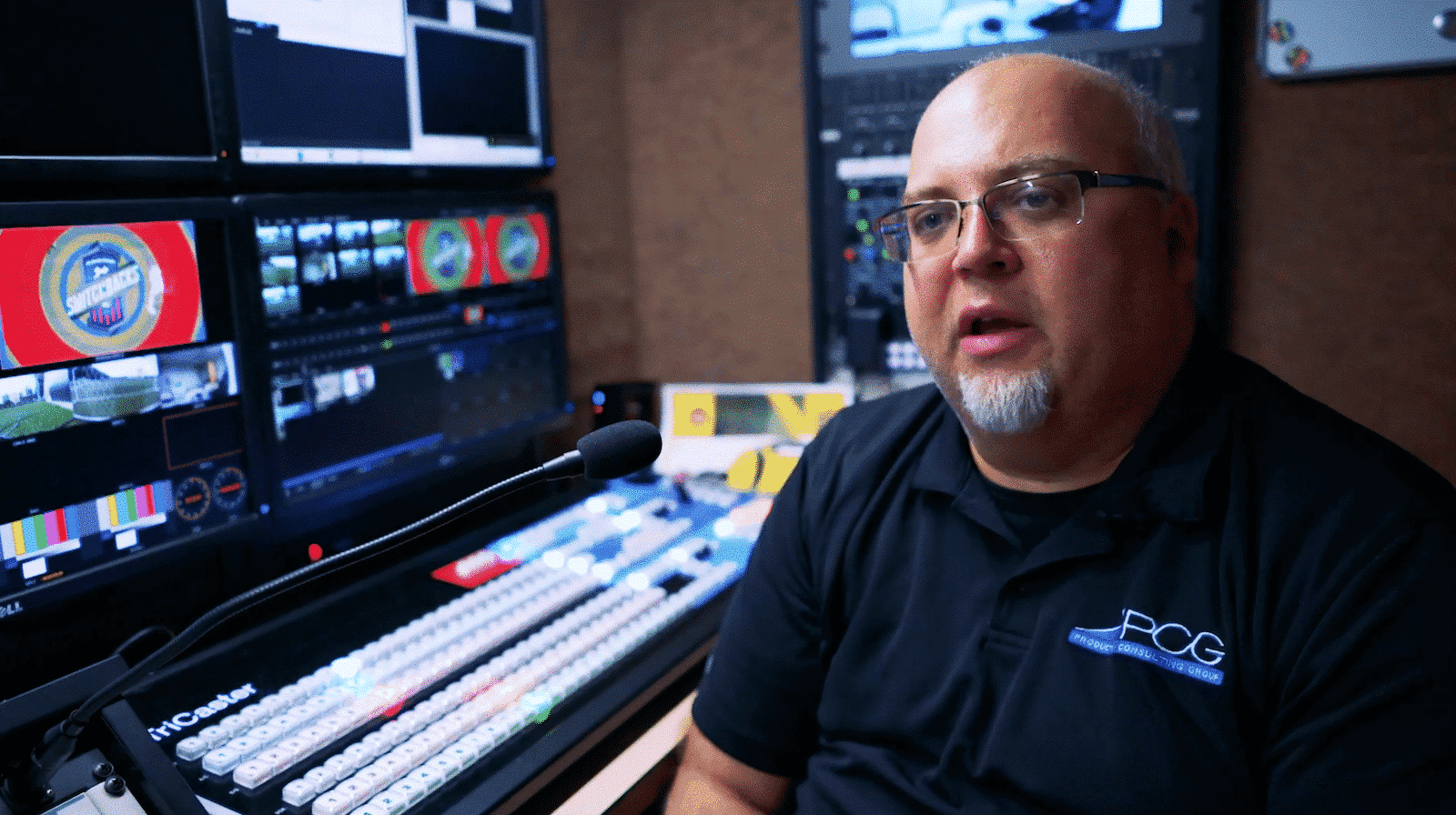
“When I got started in this business in the 80s, video switchers were just video switchers,” Powell says. “They required enormous racks of equipment that ran from floor to ceiling. They ran on 220 power. But now, with the current line of TriCaster switchers, like the 8000 in this truck, I have multiple re-entry, a multitude of keyers, animated replay wipes, and all the various macro functions built-in. With this truck, I can put on a program and no one can tell what size truck we’re using.” Take that fifty-footers.
Game Time at Pittsburgh’s Highmark Stadium
A few hours before every Pittsburgh Riverhounds home soccer game, the diminutive horse trailer slides into its parking space tucked beneath one corner of the grandstands at Pittsburgh’s Highmark Stadium. The rear double doors of the trailer fold back to reveal video and audio patch panels, and the door on the side of the trailer opens to a control room large enough to seat two or possibly three crew members. But no one watching the Riverhounds’ games live stream on the United Soccer League’s YouTube channel, would ever guess at the modest vehicle being used to produce these major-league productions.
“That’s the sleight-of-hand were able to pull off with this truck,” Powell tells me. “Producing television is like making sausage. You don’t want to know what goes into it, you don’t need to know what goes into it, as long as the output is delicious. That being said, there are very few differences between the output of this truck and the giant fifty-footers.”
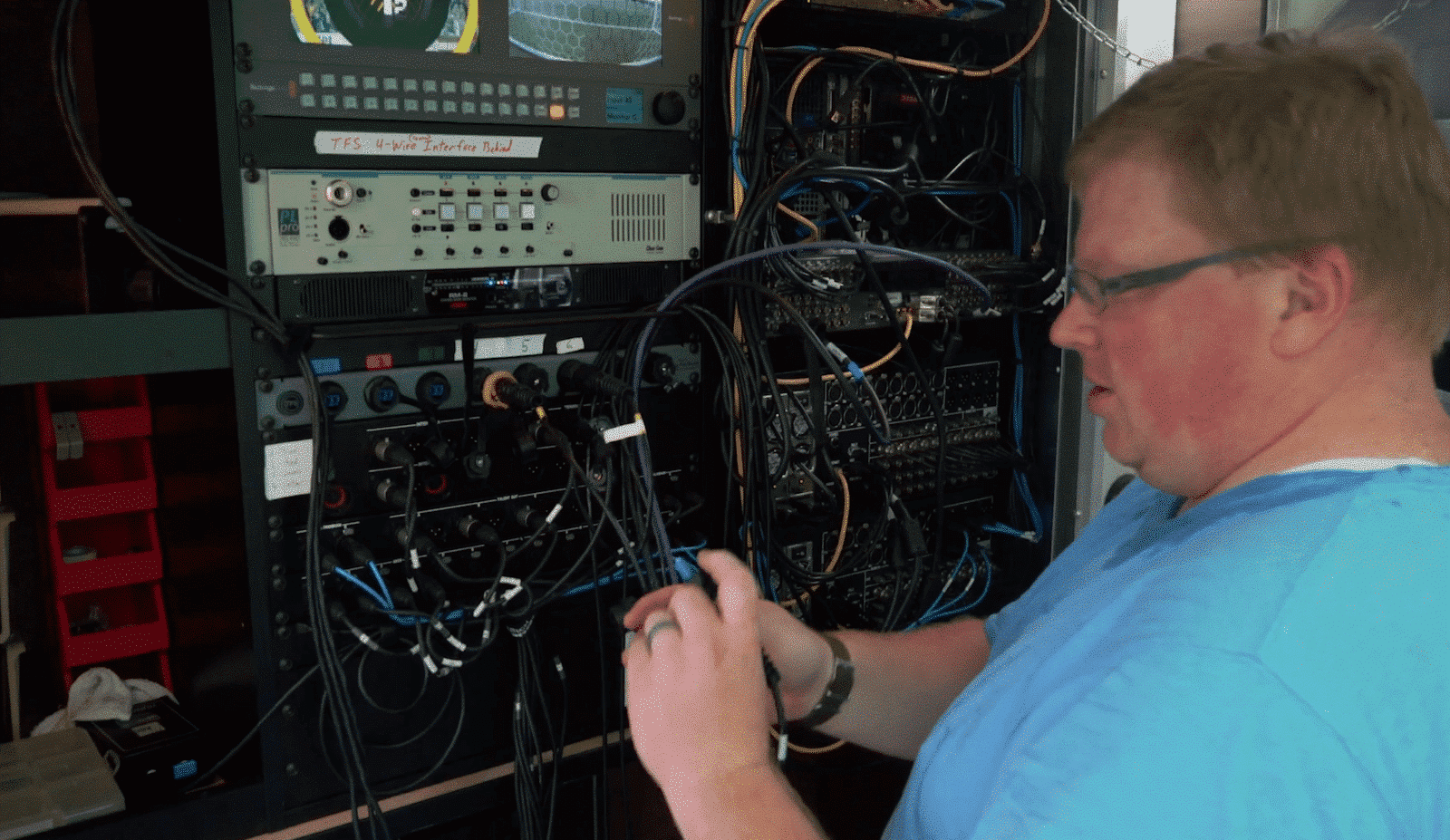
And that’s all thanks to the NewTek products at the heart of this tiny production powerhouse. Inside the horse trailer, a NewTek TriCaster 8000 with Advanced Edition software is at Powell’s disposal, doing everything those two-ton video switchers Powell once ran back in the Eighties can do, and then some. The truck is also equipped with an eight-channel NewTek 3Play system to provide replays for the broadcast. On this day, production veteran Jerry Schaad is at the controls. Other than Powell and Schaad, the truck is deserted. Graphics for the program are run from off-site, utilizing NewTek’s NDI technology. The program’s graphics operator works from his home office, more than 120 miles from the Stadium, and with the TriCaster’s NDI technology, it’s almost as if he’s sitting right beside the director in the truck.
The crew arrives about five hours before game time, and with the truck’s super light footprint everything is set and ready to go three hours later. Immediately upon arrival, the truck is plugged into two power outlets under the grandstands. Since it’s a hot day, the air-conditioning unit atop the truck begins to purr almost immediately. The crew sets up three JVC hard cameras with long lenses, two at the top of the grandstands to capture wide-angle game action, and a third at low level near midfield. Tech coordinator, Doug Sicchitano also sets up a Go Pro camera in each goal net. Up in the broadcast booth, another Go Pro is set up to monitor what’s going on with the announcers, since there is no floor director for the broadcasts.
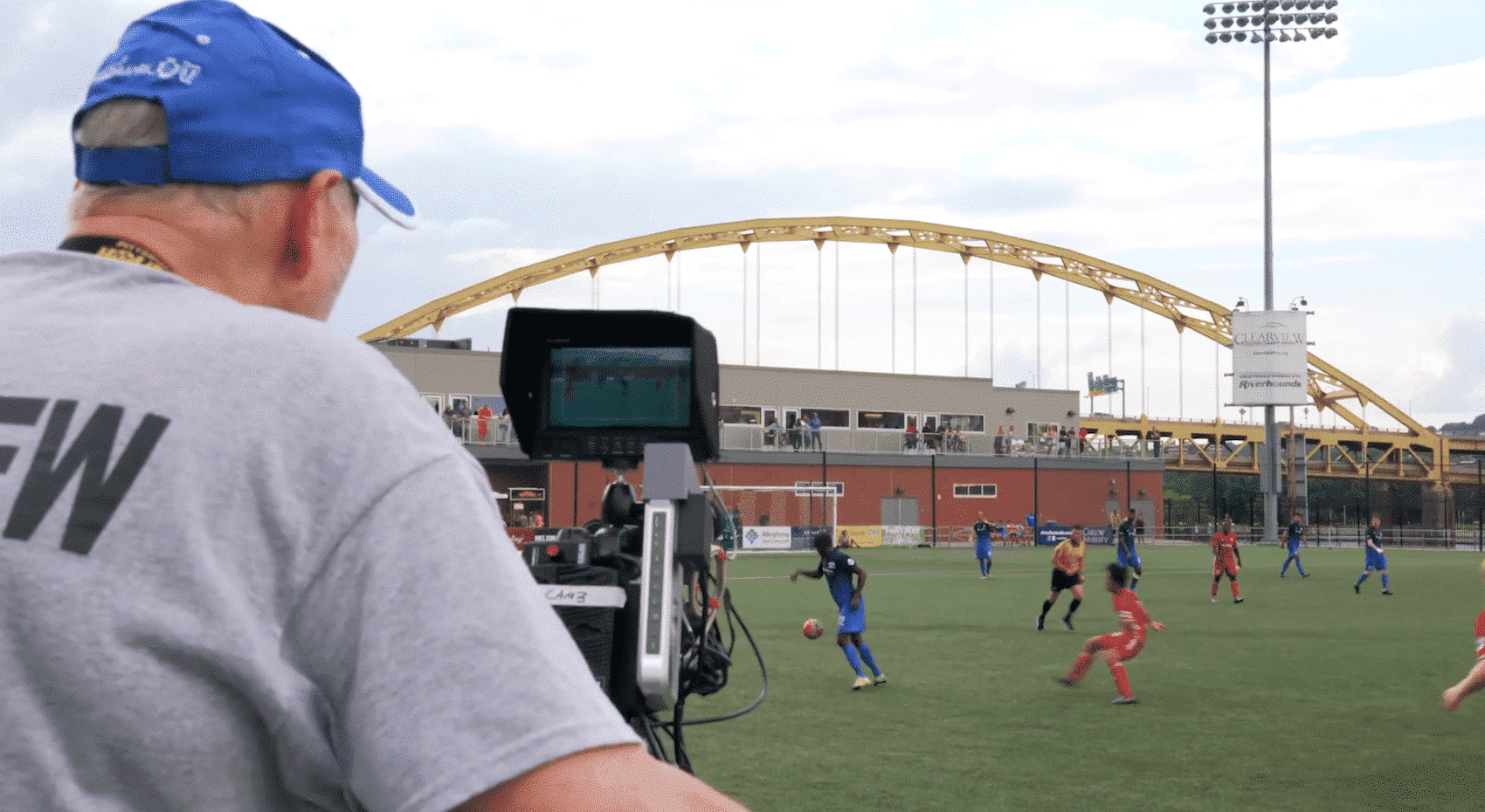
Production Consulting Group President, Jeff Waller says, “In designing this production truck, we like to refer to it as our big, little truck. It was built to this size and these specs so it could be used as an outside trailer to do sporting events like this. But we can also pull it into a convention center and, because of its small footprint, it’s able to put on a big show while utilizing a small space. It’s only a three-position vehicle internally, but we think it packs a powerful punch.”
It’s a sentiment John Powell echoes. “The wonderful part about the NewTek stuff we built into this truck is that it’s compact, and now, infinitely flexible. With the new TriCaster 8000 with Advanced Edition software, you have up to 12 inputs. I’ve got layer upon layer of keying, eight M-E banks, buffers, and everything else I need. I can roll commercials out of the media players, out of the DDR’s. I come from a background of working with the big production trucks, but I can honestly say, I have yet to hit the ceiling for the number of inputs I can utilize with this NewTek equipment.”
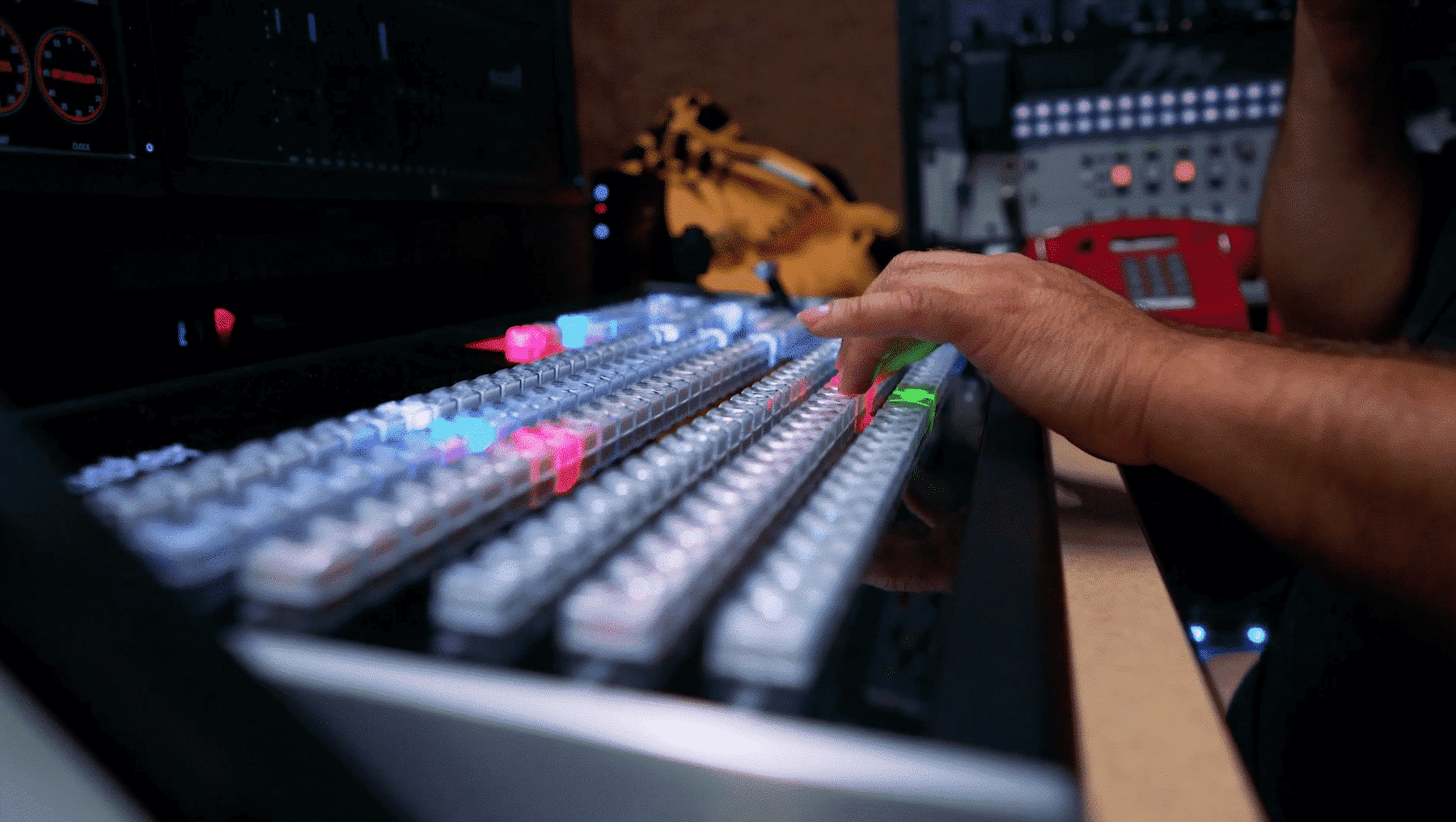
Small Power Consumption, Ultimate Flexibility
Another advantage of Production Consulting Groups 5-by-10 foot production trailer is the minimal amount of power it requires. If those fifty-foot trucks are thirsty brontosauruses, this vehicle is a grasshopper sipping through a straw. “The entire vehicle runs on two 20-amp circuits,” Powell tells me. “So I can pull in anywhere and plug into two 110 household outlets to power it. The air-conditioning and heat are on one circuit, and everything else; the TriCaster 8000, the 3Play 4800, the audio board, and everything else, runs on the other 20-amp circuit. The truck is equipped with a backup battery, so if there is a loss of power, the TriCaster doesn’t even know it. The lights in the truck are designed to go out to indicate that you’ve lost power, but the backup battery will allow you to keep going for 18 to 20 minutes. If you’ve lost power for that long, the chances are, the event you’re covering is going to stop anyway, and so, thanks to the low power consumption of the TriCaster and 3Play, power issues are virtually nonexistent in this truck.”


It’s Not the Size of the Ship, It’s the Motion of the Ocean
So, does size really matter? Powell and Waller would say no. In fact, both would maintain that the small horse trailer production vehicle has proved much more flexible than a larger truck might. The Riverhounds’ live broadcasts utilize a crew of ten, but the PCG production vehicle can be run quite comfortably with a crew of one or two if unmanned cameras are used. And broadcasts can be originated from almost anywhere. Powell sites an instance where a promised Honda generator never materialized for a broadcast originating from a venue with no power. The crew was able to run an extension cord to a nearby McDonalds, and plug the truck directly into a light pole in the parking lot. Try doing that with one of those fifty-foot trucks.
Production Consulting Group President Waller tells me that the TriCaster 8000 and 3Play 4800 aboard his vest-pocket truck add immeasurably to its flexibility, allowing a wide range of productions to be produced from the tiny dynamo.
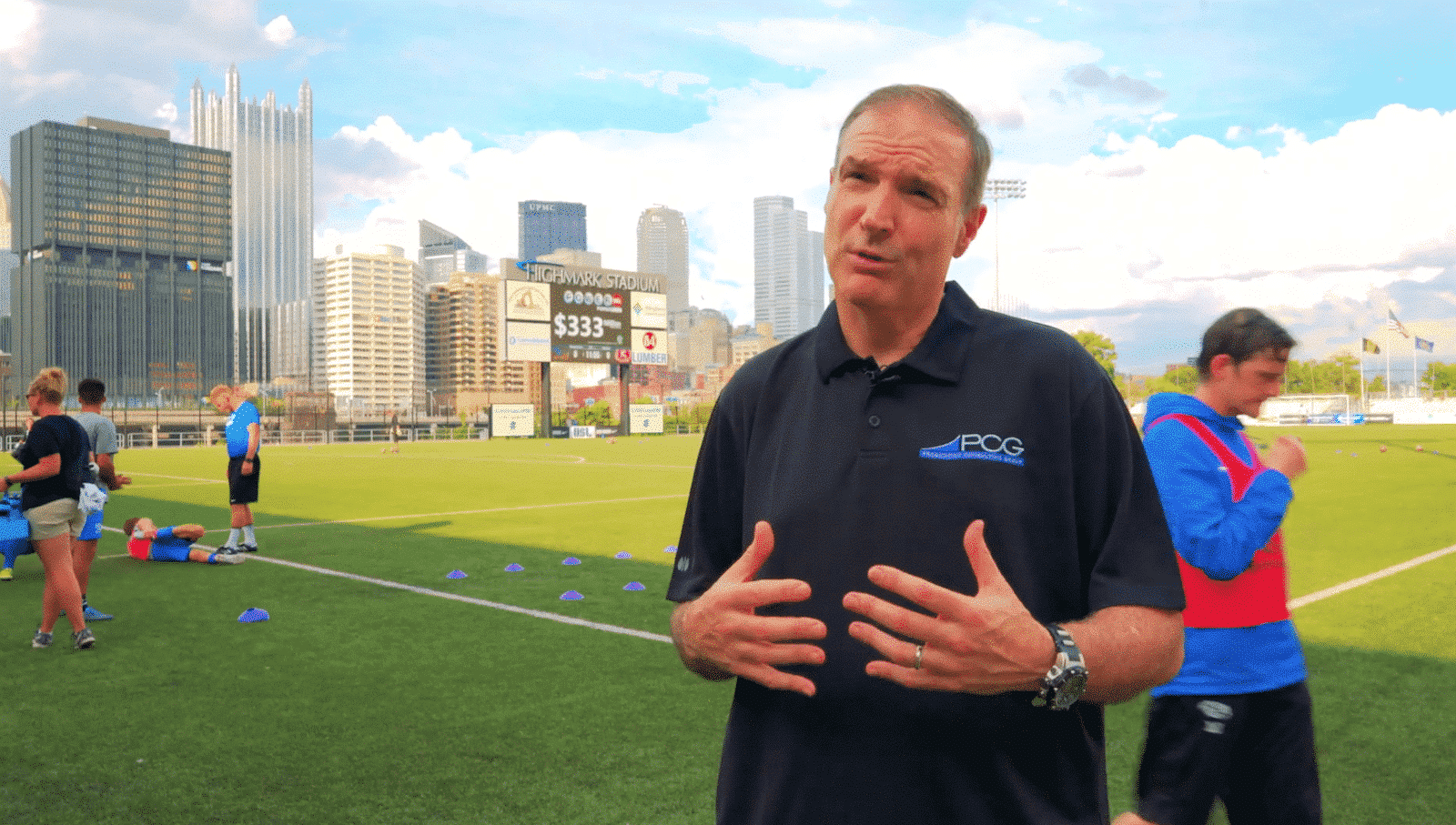
Pittsburgh Riverhounds Fast Facts:
Key Equipment & Software Used at Highmark Stadium for Pittsburgh Riverhounds Coverage
- NewTek TriCaster 8000 production switcher running Advanced Edition 2 software (NDI version)
- 8 Channel 3Play 4800 for video replays
- BlackMagic 40 x 40 Video Hub with multiple control panels throughout the system. The system has been slightly modified with tactical fiber ends and bull’s eye connectors.
- (3) JVC GYHM750 Pro HD cameras in studio configuration with Canon KT14x4 lenses, (1) JVC GYHM750 Pro HD camera in handheld configuration with Fujinon XT17 lens. Studio configuration cameras on Varizoom tripods and camera heads.
- (2) GoPro Hero 3 Black cameras in goal nets
- 4 Channel Clear-Com Intercom and IFB System
- MacBook Pro running BaseCamp and TeamViewer 10.
- ScoreHD for Soccer Graphics Software from Graphic Outfitters
- Verizon Novatel T1114 wireless 4G LTE broadband router with voice.
- Pro Intercom AD950 Telco box to connect phone into PL system
- NDI Video Monitor Tool software to back feed individual video signals to remote location. Available on NewTek website under NDI Tools.
Pittsburgh Riverhounds and United Soccer League Fast Facts
- The United Soccer League is a professional men’s soccer league in the United States and Canada that began its inaugural season in 2011. USL is sanctioned as a Division III Professional League by United States Soccer Federation.
- There are 29 teams in the USL and the current reigning champions are the Rochester Rhinos.
- All teams play 28 regular-season matches stretching from March to September. All matches are live streamed on the USL’s YouTube Channel.
- The Pittsburgh Riverhounds were founded in 1999 and played their first year in the USL in the league’s inaugural season of 2011.
- Highmark Stadium, home of the Pittsburgh Riverhounds, was completed in April of 2013. The stadium seats 3,500 with additional standing space raising its capacity to 4,000 for soccer games. The stadium is located at Station Square on Pittsburgh’s South Side, overlooking the city’s downtown skyline from across the Monongahela River. The world-famous confluence of the Monongahela, Allegheny, and Ohio Rivers are less than 500 yards downstream.
Article by Brian Leopold

